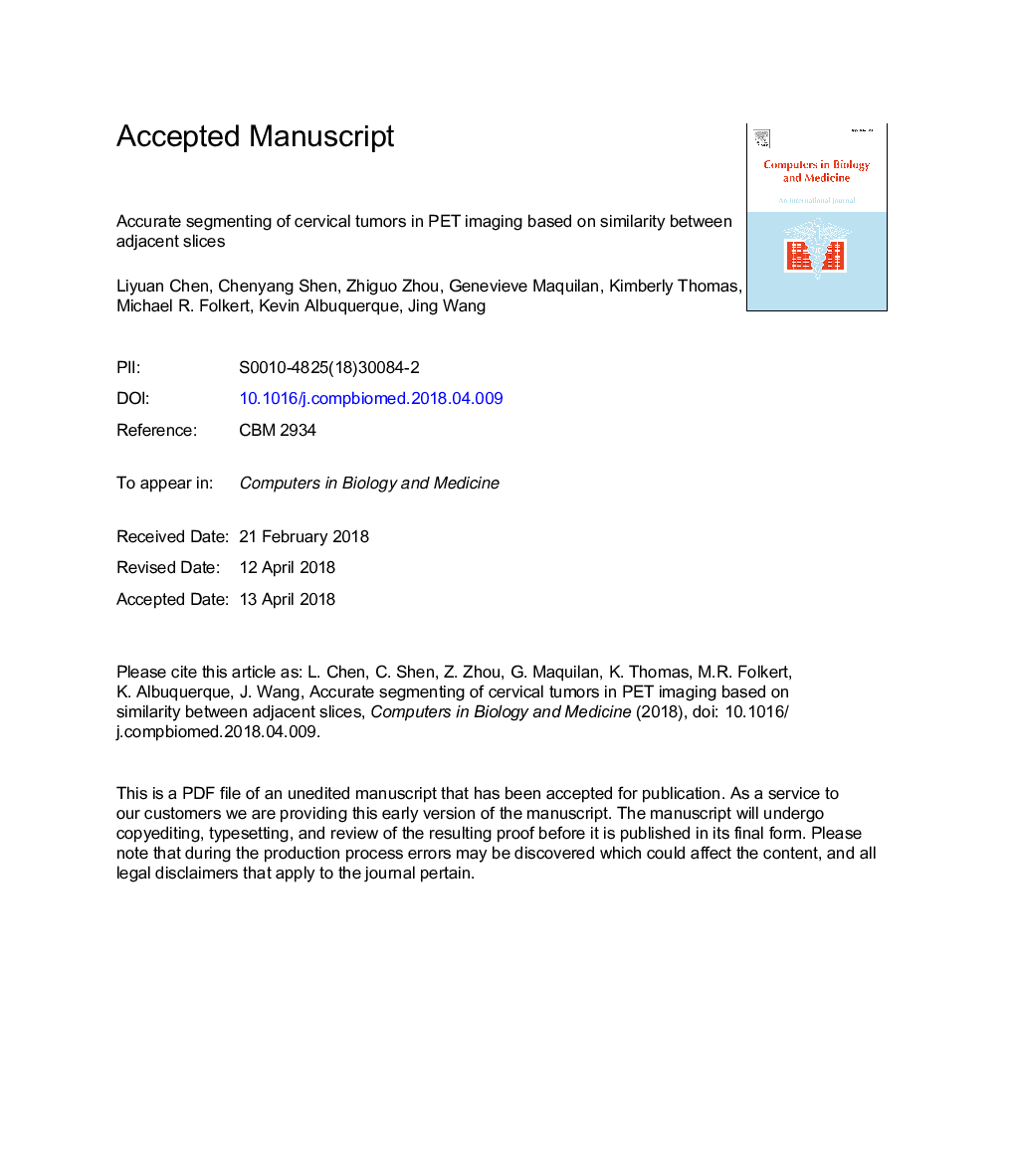| Article ID | Journal | Published Year | Pages | File Type |
|---|---|---|---|---|
| 6920514 | Computers in Biology and Medicine | 2018 | 20 Pages |
Abstract
Because in PET imaging cervical tumors are close to the bladder with high capacity for the secreted 18FDG tracer, conventional intensity-based segmentation methods often misclassify the bladder as a tumor. Based on the observation that tumor position and area do not change dramatically from slice to slice, we propose a two-stage scheme that facilitates segmentation. In the first stage, we used a graph-cut based algorithm to obtain initial contouring of the tumor based on local similarity information between voxels; this was achieved through manual contouring of the cervical tumor on one slice. In the second stage, initial tumor contours were fine-tuned to more accurate segmentation by incorporating similarity information on tumor shape and position among adjacent slices, according to an intensity-spatial-distance map. Experimental results illustrate that the proposed two-stage algorithm provides a more effective approach to segmenting cervical tumors in 3D18FDG PET images than the benchmarks used for comparison.
Keywords
Related Topics
Physical Sciences and Engineering
Computer Science
Computer Science Applications
Authors
Liyuan Chen, Chenyang Shen, Zhiguo Zhou, Genevieve Maquilan, Kimberly Thomas, Michael R. Folkert, Kevin Albuquerque, Jing Wang,
